Physics Electricity flashcards
1/60
There's no tags or description
Looks like no tags are added yet.
Name | Mastery | Learn | Test | Matching | Spaced |
|---|
No study sessions yet.
61 Terms
Electric current
Rate of flow of charged particles in motion (ions, electrons, protons)
Rate of flow of charge per unit time
Measured in Amperes (A)
Known as ‘I’ in scientific notation
Charge
Property of matter that causes electrical effects.
Property of protons and electrons
Known as ‘Q’ or ‘q’
Charge measured as Coulombs
Similar charges tend to repel
Different charges tend to attract
Charge of a proton 1.6x10-19 C
Charge of an electron -1.6x10-19 C
1 coulomb - the charge that flows past a point in one second when there is a current of 1 A
Relation between charge and current: I = ΔQ/ΔT
Conventional current
in the opposite direction to the actual flow of the electrons
The usual carrier is the electron, which carries a negative charge
Conventional always in positive direction (+ to -)
The actual flow is negative to positive
Charge carrier
electrons or ions in electrolysis
In an insulator the electrons are attached to atoms so they cannot move (not delocalised), therefore applying a P.D. Across the insulator will not create a current
Most electrons are attached to atoms in metal but some are not (some delocalised), therefore a P.D will attract electrons to the positive terminal of the metal and create a current
Semiconductors
the number of charge carriers changes with temperature
As temperature increases it liberates (delocalises) electrons (charge carriers), so resistance is reduced - this is crucial in the design of computer silicon chips.
Conductor properties when temperature changes
the amount of resistance increases as the temperature is increased and current decreases when resistance and temp increases
Batteries
uses chemicals to store energy, which is released when the battery is used until it is depleted
Rechargeable batteries
contains chemicals where the reactions can be reversed if a potential difference is applied.
Electromotive force (EMF)
Amount of chemical energy transferred / converted to electrical energy for 1 C of charge (through the battery)
Potential difference (P.D.)
energy emitted per unit charge on a component or work done per unit charge
[JC-1] or [V]
Certain amount of work used to move the charge a certain difference - increase electrical potential
The greater the distance moved, the greater the P.D.
1 volt
the potential difference between two points when 1 joule of work is done to move a charge of 1 coulomb
Power equations
P=V2/R
P=I2R
P=IV
P=W/t
Power
rate of transfer of energy per unit time (rate of work done per unit time)
Resistance [Ω]
a material’s opposition to the flow of electric current; measured in ohms
caused by the repeated collisions between the charge carriers in the material
Equation: Resistance = P.D. across component / current through it
Unit resistance is the Ohm [Ω] = 1 volt per ampere
Resistance through conductors
As electrons move through a conductor, they collide with atoms in the metal
Higher resistance, more energy transferred as current moved
Ohm’s law
The P.D. across a metallic conductor is proportional to the current through it provided the physical conditions do not change (e.g. temperature).
Resistivity
a measure of resisting power of a specified material to the flow of current
Can be calculated by finding the cross sectional surface area of the wire and the length of the wire.
Resistivity units
Ohm meters (Ωm)
Resistivity equation
⍴ = RA/L
Resistivity = (resistance x area)/ length
Superconductors
a wire or device that has zero resistivity at and below a critical temperature.
Used in power transmission in overhead cable to negate the resistance
Used to make extremely strong and stable magnetic fields which can be used in particle accelerators, MRI machines and nuclear fusion reactors
Below a critical temperature, as the higher a temperature, the higher the resistance
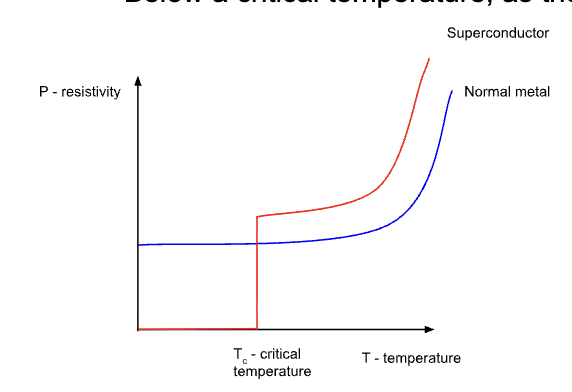
superconductivity
property of a material that has zero resistivity at and below a critical temperature.
critical temperature
specific temperature at which a superconductor's electrical resistance drops to zero, allowing it to conduct electricity with no energy loss
Cell
A source of electrical energy

Diode
Allows current to flow one direction only (used to convert AC to DC current)

Light emitting diode (LED)
A diode which emits light when current passes through it. Used in aviation lighting and displays.
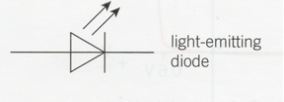
resistor
Limits the flow of current. Fixed resistors has a resistance it cannot change

variable resistor
Resistor with a slider that cna be used to change its resistance. Often used in dimmer switches and volume controls

Thermistor
Resistance of a thermistor decreases when temperature increases and vice versa [TURD - Temperature up [increases], resistance down)
![<p>Resistance of a thermistor decreases when temperature increases and vice versa [TURD - Temperature up [increases], resistance down)</p>](https://knowt-user-attachments.s3.amazonaws.com/cf7e3d0c-66e6-434b-8efc-326c8ca7e76c.png)
Light dependent resistor (LDR)
Resistance of LDR decreases when light intensity increases and vice versa. (LURD - Light up [increases], resistance down)
![<p>Resistance of LDR decreases when light intensity increases and vice versa. (LURD - Light up [increases], resistance down)</p>](https://knowt-user-attachments.s3.amazonaws.com/2af400bf-2ea8-4f06-9540-ee0f037c41af.png)
heater
Converts electrical energy to heat

Electric motor
a device that converts electrical energy into mechanical energy

Ammeter
A device used to measure current in a circuit, put in series

voltmeter
A device used to measure voltage, or electrical potential energy difference, put in parallel

Resistance in series circuits
Total resistance in series circuit is the sum of the resistances
Rt = R1+ R2+ R3
Kirchhoff's First law (conservation of charge)
Current going into the junction is equal to current going out of the junction
It =I1 + I2
Kirchhoff’s second law (conservation of energy)
the sum of electromotive forces (voltages) ad potential drops in any closed loop of electrical circuit must be equal to zero OR the total voltage from sources equals the total voltage across components within that loop
Node
point of a junction in a circuit where current is split into 2 or more branches
Resistance in parallel circuits
1/Rt = 1/R1 + 1/R2 + 1/R3
Rt = R1R2 / R1+R2
Resistance heating
When current flows through a component that offers resistance to it, then energy is transferred as heat
Cells in series circuits
εt = ε1 + ε2 …εn
total emf (ε) is the sum of the emf’s of the cell (when in series)
It makes no difference if there are components between the cells (includind internal resistance)
Cells must be the same orientation in the circuit or the emf cancels out
Circuits with identical cells in parallel circuits
For a circuit with n identical cells in parallel the current through each cell = l / n , where l is the total current applied by the cells
So the lost P.D. in each cell - I/n r = Ir/n, where r is the internal resistance of each cell
So the terminal PD across each cell, V = ε- Ir/n
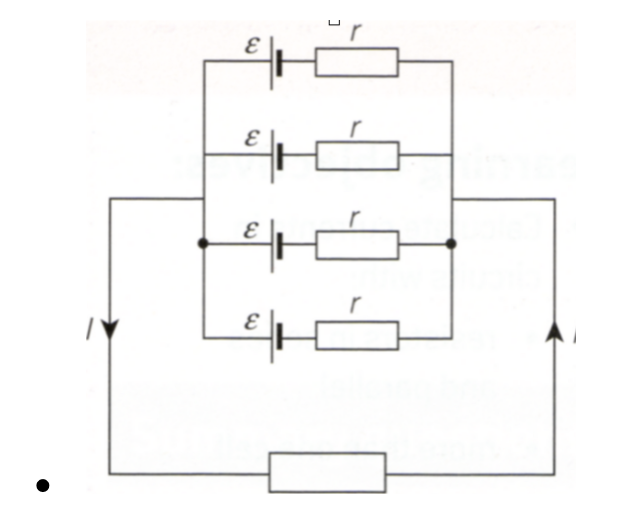
Diode in circuits
Diodes offer very high resistance in one direction so current only passes one way
If not specified, then assume a forward biased diode has a P.D. across it of 0.6V and infinite if reversed
total current equation
It = εt / Rt
Potential divider
circuits that produce an output voltage as a fraction of the input voltage by using two resistors in series that split the P.D. from the source between them
One of the resistors is fixed and the other can change resistance (e.g. variable resistor, LDR or thermistor)
Varying resistance of one of the resistors then changes the proportion of the P.D. that it uses, using it to control an output P.D. across one of the resistor
Uses of potential dividers
supply a P.D. which is fixed at any value between zero and the source P.D
to supply a variable P.D.
to supply a P.D. that varies with a physical condition such as temperature or pressure
supplying a variable P.D.
Instead of having two fixed resistors, it may be more useful to have a sliding point along a piece of uniform resistance wire or alternati vely a sliding contact i a dium formation
Creates a ratio of resistances between the two parts of the resistor
Sensor circuit
Use an LDR or thermistor to create a circuit based on light or temperature conditions
Can be used to directly feed P.D. to a device (e.g. cooling fan) or to turn a switch on and off on a secondary circuit (solenoid system)
Variable resistor often takes place of fixed resistor from potential divide so the circuit can be turned (i.e. setting temperature which the ricuit will turn on and off)
thermal runaway
an uncontrollable, self-accelerating chain reaction where a rise in temperature causes further temperature increases, often leading to a destructive outcome. begins when the heat generated by internal reactions exceeds the heat dissipated, creating a positive feedback loop that can cause fires or explosions.
Potential divider using variable resistor
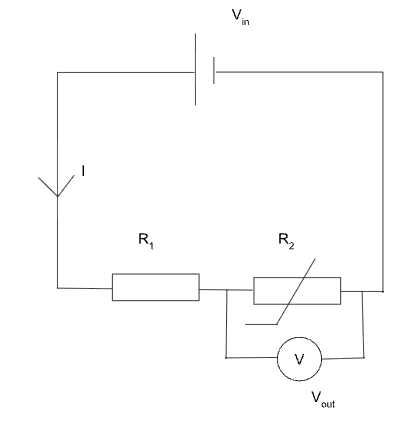
Potential divider using fixed resistor and varying length of wire
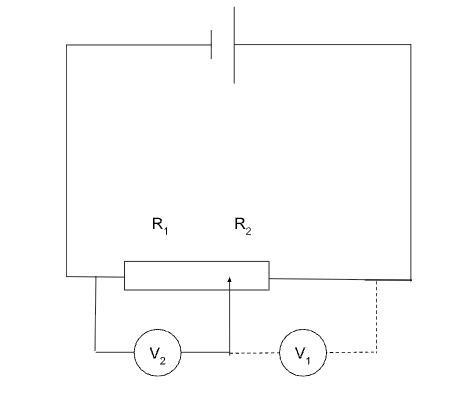
Temperature sensor
Consists of a potential divider made using a thermistor and a variable resistor
With temperature constant, P.D. is shared in series
By changing resistance of variable resistor, P.D. across thermistor can be set at required value
When temperature of the thermistor changes, its resistance changes so its share of P.D. across changes
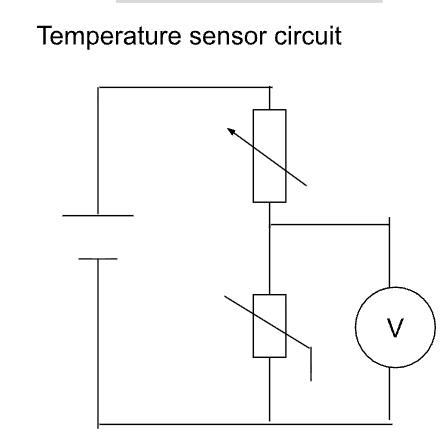
Light sensor
Consists of a potential divider made using a LDR and a variable resistor
Share of P.D. across LDR changes when the light intensity falling onto LDR changes
E.g. if Light intensity increases, LDR resistance decrease, therefore share of P.D. across LDR decrease
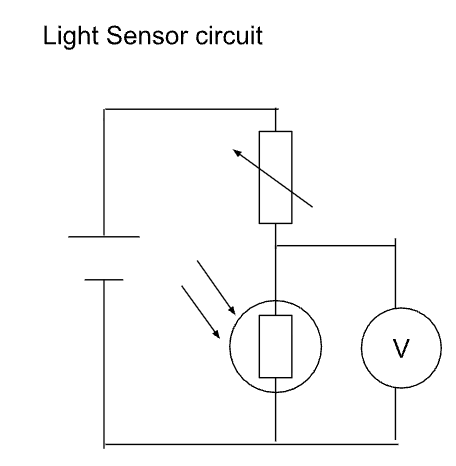
Potential divider equations
Vout = Vin x (R2 / R1+R2)
V1 / V2 = R1 / R2